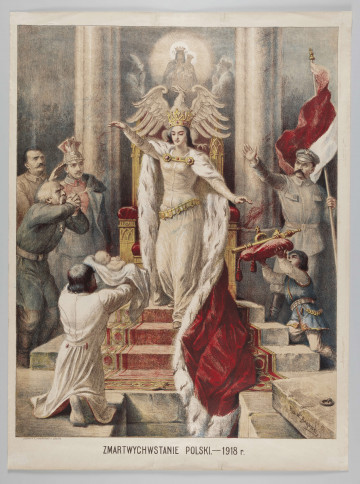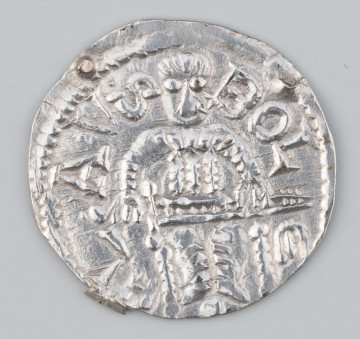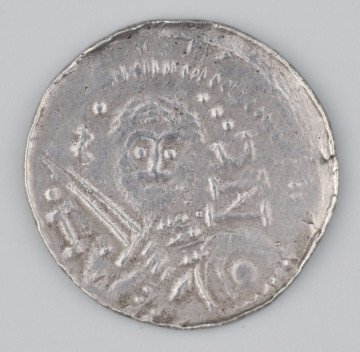
Resurrection of Poland
1918
National Museum in Lublin
Part of the collection: Money on Polish territory in the Middle Ages
After the death of Władysław Herman († 1102), the co-rulership of his sons Bolesław and Zbigniew ended in a fratricidal conflict, with Bolesław taking over full power in 1107. During his long reign (1102/1107-1138), this prince issued four denarius issues, connected with successive stages of his rule. Chronologically the first, dating from the period of his co-rulership with Zbigniew (1102-1107), was a denarius with the image of the prince in spiked armour and a building topped with three crosses. The representation was taken from the denars of Władysław Herman. The second type of denars – with the image of the ruler on the throne – was introduced in 1107, after he took power over the whole country. It was followed by the type depicting St Adalbert on the throne and the prince standing next to him. Its issue was connected to the public penance of Bolesław Krzywousty for the crime committed against Zbigniew in 1113. On the fourth and last denarius issue the scene of the knight's fight with the dragon, which had been used earlier on the rare royal denarius of Bolesław Śmiały (1076-1079), was reproduced.
The subsequent issues of coins described above were related to the practice, already well-established in Europe and implemented in Poland at that time, whereby the ruler made a profit from minting by periodically exchanging old money for new money (renovatio monetae, in Latin), accompanied by a favourable conversion for the issuer. It was a kind of tax for the state.
The denarius discussed here, with St Adalbert seated on a throne and Bolesław standing next to him, exposes the superior position of the saint over the authority of the prince. Reliance on the authority of St Adalbert resulted from the need to refer to the patron saint of Poland in the difficult period of Bolesław Krzywousty's reign, after the crime against Zbigniew.
Coins produced in Cracow, or possibly in Wiślica, by Bolesław Krzywousty circulated mainly in Lesser Poland (with Sandomierz and Lublin regions) and Silesia, Central Poland and Mazovia, where they are discovered by treasure seekers. They remained in use for several decades. Single specimens are recorded in a few more treasures hidden at the turn of the 12th and 13th centuries.
Tomasz Markiewicz
Author / creator
Dimensions
cały obiekt:
Object type
numismatic
Technique
stamp minting
Material
silver
Creation time / dating
Creation / finding place
Owner
The National Museum in Lublin
Identification number
Location / status

1918
National Museum in Lublin

1146 — 1152
National Museum in Lublin

1140 — 1143
National Museum in Lublin
DISCOVER this TOPIC
Castle Museum in Łańcut
DISCOVER this PATH
Educational path